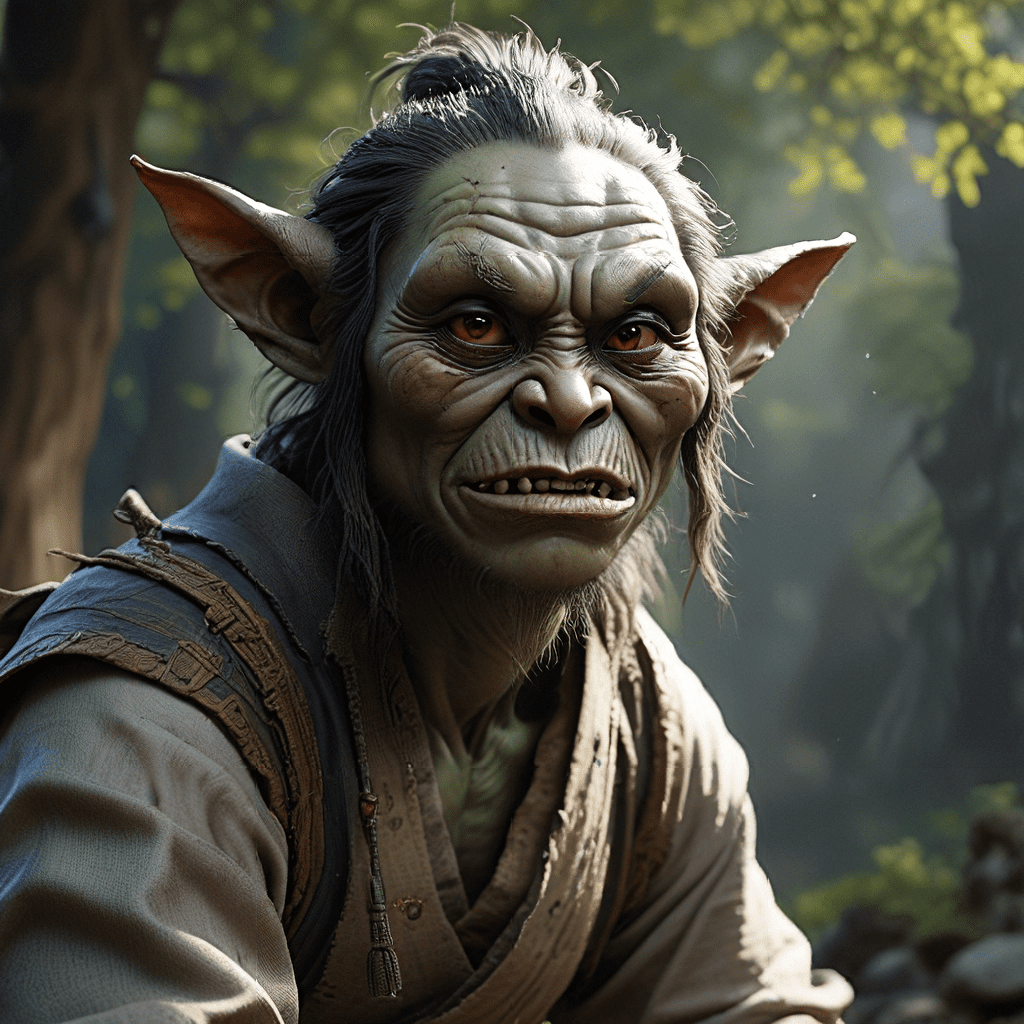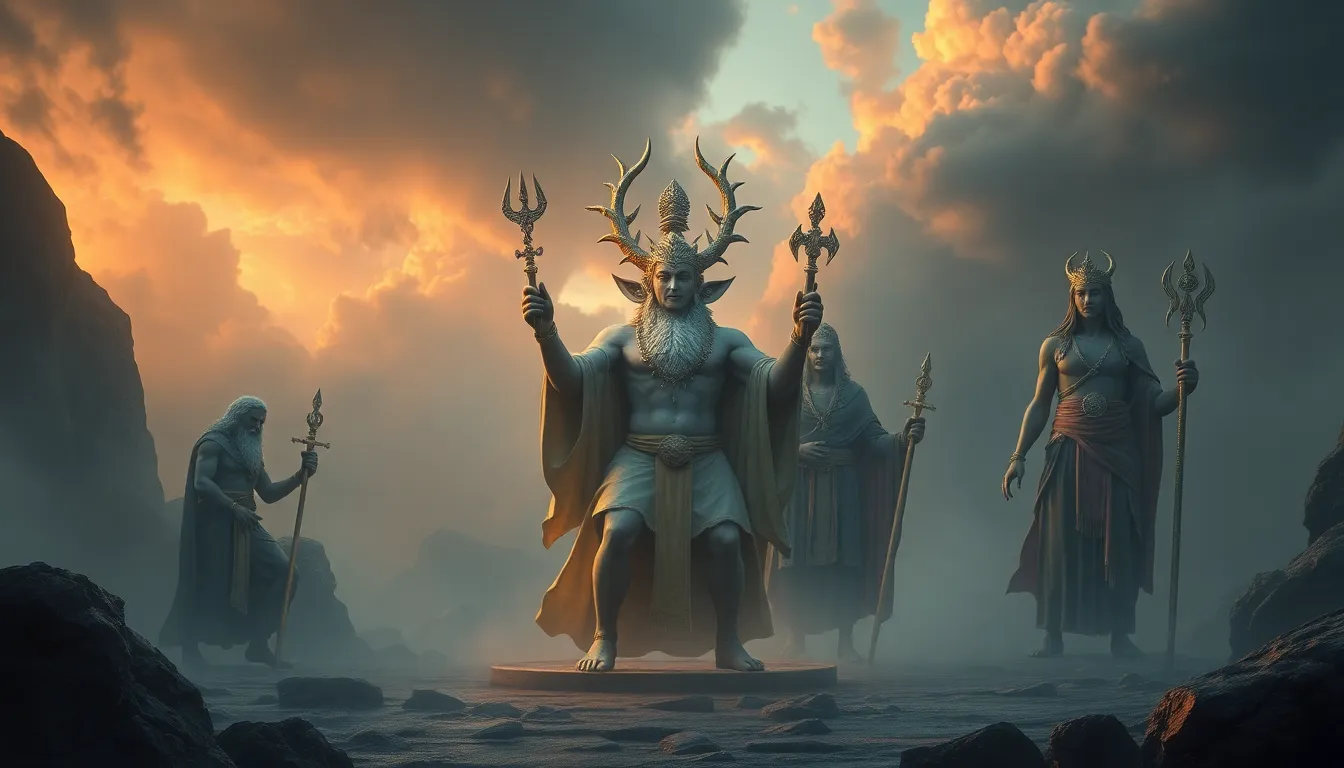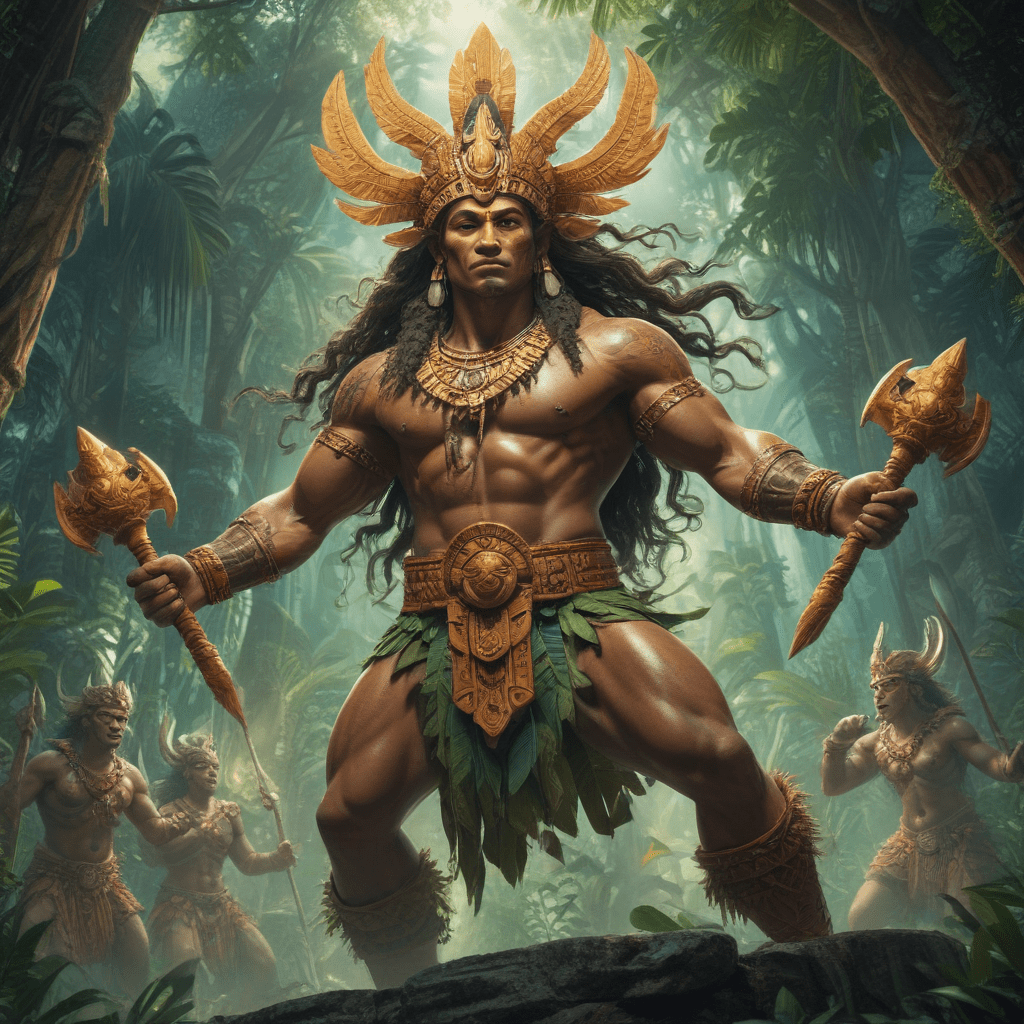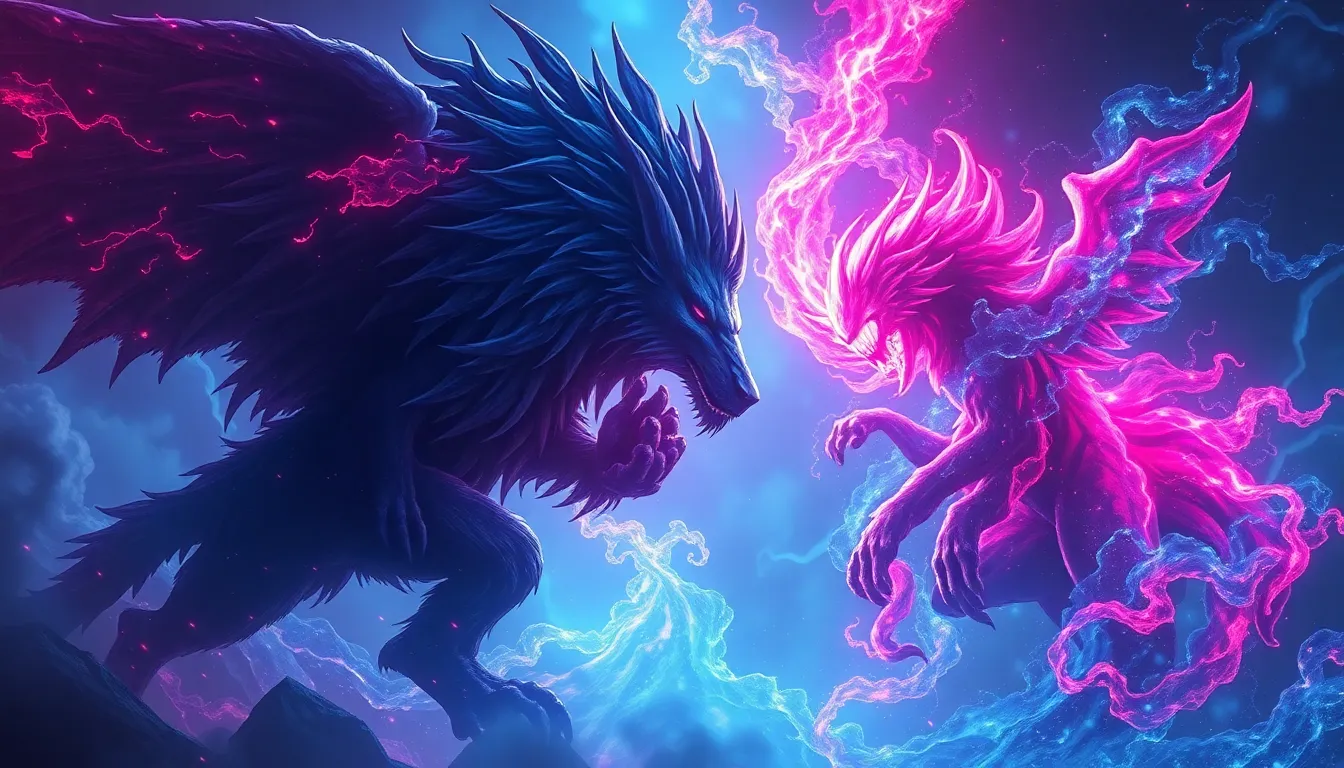The Dokkaebi in Korean Folklore: Guardians of the Boundaries
In the rich tapestry of Korean folklore, the Dokkaebi stands as a figure of both fascination and fear. These mischievous and enigmatic beings are often described as goblins or imps, dwelling on the edges of the human world, guarding the boundaries between the realms of the living and the dead. Their presence is felt in the rustling leaves, the creaking of old houses, and the whispers of the wind, forever reminding us of the unseen forces that shape our world.
The Dokkaebi are not mere figments of imagination; they are deeply ingrained in Korean mythology, embodying the very essence of the supernatural. They are believed to be guardians of the mountains, forests, and rivers, protecting these sacred places from harm. As such, they play a vital role in maintaining the balance of nature, ensuring the continuation of life and the well-being of all beings.
The Dokkaebi's connection to the natural world is evident in their traditional portrayal as protectors of the environment. They are often seen as guardians of trees, rocks, and water sources, ensuring that these natural resources are used responsibly and not exploited for selfish gain. This connection to the natural world further emphasizes their role as guardians of the boundaries between the human and supernatural realms, reminding us of the importance of respecting the balance of nature and the forces that lie beyond our understanding.
Appearance and Characteristics: Shifting Forms and Mischievous Nature
The Dokkaebi is a creature of immense variety and constant change, their appearance shifting with the whims of their nature. There is no single, definitive image of the Dokkaebi, for they are as multifaceted as the human imagination itself. Some accounts portray them as small and ugly, with misshapen bodies, horns, and long, sharp claws. Others depict them as tall and powerful, with glowing eyes and bodies that shimmer with an unearthly light.
Regardless of their physical form, the Dokkaebi are known for their mischievous nature, a playful but often unpredictable quality that has made them both revered and feared by humans. They delight in playing tricks on unsuspecting mortals, hiding objects, leading people astray, or even causing minor misfortunes. Their actions are not malicious but rather a reflection of their playful nature, a desire to test the boundaries of the human world and disrupt the mundane order of things.
The Dokkaebi's unpredictability is perhaps their most defining characteristic. They can be kind and benevolent one moment, granting wishes or helping those in need. Yet, they can also be cruel and vengeful, punishing those who disrespect nature, break promises, or act with greed and selfishness. This duality is reflected in the diverse tales of Dokkaebi encounters, where their actions range from harmless pranks to acts of profound intervention in human affairs.
The Dokkaebi’s Dwelling: Hidden in Plain Sight
The Dokkaebi, like the spirits they embody, are believed to inhabit the hidden corners of the world, living among the trees, rocks, and waters that they guard. Their dwellings, often concealed from human eyes, are said to be found in caves, hollowed-out trees, or even beneath ancient stone monuments. The Dokkaebi are masters of disguise and illusion, able to blend seamlessly with their surroundings, making their presence known only when they choose.
One common theme in Dokkaebi lore is the association with ancient objects and forgotten places. Old wells, abandoned temples, and forgotten tombs are said to be favored haunts of these mischievous beings, their presence sensed in the rustling leaves, the creaking of old houses, or the eerie whispers that echo through the stillness of the night. These locations serve as portals to a different realm, where the Dokkaebi can observe the human world without being seen.
The Dokkaebi's dwellings are not merely places of habitation but rather points of connection between the human and supernatural realms. They serve as reminders that the world we inhabit is not as simple as it may seem, that there are forces at work that we cannot fully comprehend, and that there are beings who watch over us, both benevolent and mischievous, guiding our destinies in ways we may never fully understand.
The Dokkaebi’s Power: Shapeshifting, Illusion, and Supernatural Abilities
The Dokkaebi, as guardians of the boundaries, are endowed with supernatural abilities that set them apart from ordinary beings. They are masters of illusion, able to create mirages, manipulate shadows, and conjure visions that are both beautiful and terrifying. They can shapeshift at will, taking on the form of animals, humans, or even inanimate objects, making them elusive and unpredictable.
Their powers are not merely for amusement; they are tools for maintaining the balance of nature and protecting the boundaries between the realms. They use their powers to thwart evil spirits, punish wrongdoing, and reward those who show respect and kindness. Their abilities also serve as a warning to those who dare to cross the boundaries of the supernatural, reminding us of the dangers that lurk beyond our understanding.
The Dokkaebi's magical abilities, though often used for good, can also be a source of fear and anxiety for humans. Their shapeshifting abilities, their ability to conjure illusions, and their mastery of the supernatural can seem to defy logic and reason, blurring the lines between reality and fantasy. It is this very uncertainty that makes the Dokkaebi so powerful and enduring a figure in Korean folklore.
The Dual Nature of the Dokkaebi: Trickster, Protector, and Punisher
The Dokkaebi are a paradox, a duality of mischievous and benevolent forces. They are both tricksters and protectors, capable of playing pranks on unsuspecting humans, yet also defending the boundaries of the world from harm. They are the guardians of the forests, mountains, and rivers, but they are also the keepers of secrets and the harbingers of unforeseen consequences. The Dokkaebi's dual nature is reflected in their ever-changing appearances, their unpredictable actions, and the myriad tales that surround them.
On one hand, they are known for their mischievous pranks, often targeting those who are greedy, selfish, or disrespectful to nature. They may hide objects, lead people astray, or even cause minor misfortunes, reminding humans of their place in the grand scheme of things. However, they can also be benevolent, offering guidance, protection, and even wealth to those who are kind, compassionate, and respectful of the natural world.
The Dokkaebi are not merely tricksters; they are also punishers, meting out justice to those who transgress the laws of nature or the ancient boundaries they guard. They may appear to those who have wronged others, demanding retribution for their actions, ensuring that the balance between good and evil is maintained. Their actions, though often unpredictable, are ultimately designed to keep the world in harmony, reminding us that there is a consequence for every action, both good and bad.
The Dokkaebi and the Human World: Encounters and Interactions
The Dokkaebi's presence in the human world is often felt through encounters that blur the lines between reality and fantasy. Stories of Dokkaebi interactions span a wide range, from playful pranks to acts of profound intervention. In many tales, the Dokkaebi's appearance is a harbinger of change, marking a significant moment in a person's life.
One common theme in Dokkaebi encounters is the exchange of gifts, often in the form of challenges or riddles. The Dokkaebi may offer the protagonist a chance to gain wealth, knowledge, or even immortality, but at a price. The challenges often test the protagonist's character, forcing them to make difficult choices and confront their own desires. If they succeed, they may be rewarded with great fortune, but failure could lead to misfortune or even punishment.
These encounters highlight the Dokkaebi's role as guardians of the boundaries between the human and supernatural realms. They test the boundaries of human morality and remind us that there is a price to be paid for seeking power or wealth beyond the ordinary. The Dokkaebi's actions are not always clear, but they serve as a reminder that the world is filled with mysteries beyond our understanding and that there are forces at work that we cannot control.
Origins and Theories: From Nature Spirits to Ancient Deities
The origins of the Dokkaebi are shrouded in mystery, their presence in Korean folklore dating back centuries. There are several theories about their origins, ranging from ancient nature spirits to remnants of forgotten deities.
One theory suggests that the Dokkaebi evolved from ancient nature spirits, embodying the forces of the mountains, forests, and rivers. These spirits were believed to have a deep connection to the natural world, protecting its balance and ensuring the continuation of life. Over time, these nature spirits developed their own personalities and characteristics, becoming the mischievous and unpredictable Dokkaebi of legend.
Another theory suggests that the Dokkaebi are remnants of ancient deities, whose powers were diluted or transformed over time. These deities may have been associated with specific places or activities, such as agriculture, hunting, or warfare. As their influence waned, they became less powerful and more localized, eventually taking on the characteristics of the Dokkaebi.
Regardless of their origins, the Dokkaebi hold a vital place in Korean mythology, embodying the essence of the supernatural and reminding us of the unseen forces that shape our world. Their presence is a testament to the enduring power of folklore and the way in which it reflects the beliefs, anxieties, and values of a culture.
The Dokkaebi in Modern Culture: From Folklore to Film and Literature
The Dokkaebi's enduring appeal is evident in their presence in modern Korean culture, where they continue to fascinate and inspire. From film and television to literature and art, the Dokkaebi has become a popular symbol of the supernatural and a reflection of Korean identity.
In recent years, the Dokkaebi has become a popular figure in Korean cinema and television, appearing in both traditional and contemporary films. They are often portrayed as mischievous and unpredictable creatures, sometimes with a hint of danger, but also with a touch of humor. Their presence adds a layer of intrigue and suspense to the stories, reminding viewers of the mysterious forces that lurk beyond the ordinary.
The Dokkaebi's appeal also extends to literature, where they are featured in novels, short stories, and even children's books. In these works, they are often used to explore themes of good versus evil, the balance of nature, and the consequences of human actions. The Dokkaebi's ability to shift between benevolent and malevolent roles makes them ideal characters to explore complex moral dilemmas and the grey areas of human nature.
The Enduring Appeal of the Dokkaebi: A Reflection of Korean Identity
The Dokkaebi's enduring appeal in Korean culture speaks to the deep-seated fascination with the supernatural and the desire to understand the forces that shape our world. The Dokkaebi's mischievous nature, their unpredictable actions, and their ability to exist in both the physical and spiritual realms offer a powerful reminder that there is more to the world than meets the eye.
The Dokkaebi's presence also reflects a deep connection to the natural world, a reverence for the forces of nature, and the importance of maintaining balance. This connection is particularly relevant in a culture that has long been influenced by the mountains, forests, and rivers that surround it.
The Dokkaebi's duality – their ability to be both benevolent and malevolent – speaks to the complex and often contradictory nature of human experience. Their presence reminds us that we are not always in control of our destinies and that there are forces at work that we cannot fully comprehend.
The Dokkaebi’s Legacy: A Timeless Symbol of the Supernatural
The Dokkaebi remains a timeless symbol of the supernatural, embodying the mystery, wonder, and power of the unseen world. Their enduring presence in Korean folklore speaks to the enduring power of mythology and its ability to reflect the deepest fears, hopes, and beliefs of a culture.
The Dokkaebi's legacy is a testament to the power of storytelling and the human desire to understand the forces that shape our world. As guardians of the boundaries between the realms of the living and the dead, they remind us that there is a world beyond our understanding, a world of wonder, danger, and endless possibilities.
FAQ
Q: Are Dokkaebi always malevolent?
A: No, Dokkaebi are known for their dual nature, often acting mischievously but sometimes also benevolently. Their actions are often unpredictable, and they may act to protect or punish depending on the situation.
Q: What are some ways to appease Dokkaebi?
A: Respect for nature and offering small gifts are believed to appease Dokkaebi. They are often associated with mountains, forests, and rivers, so showing reverence for these places is important. Offerings may include food, alcohol, or even simple objects like coins.
Q: Are Dokkaebi real?
A: The existence of Dokkaebi is a matter of belief. They are considered part of Korean folklore and mythology, embodying powerful supernatural forces. Whether they are real or not is a personal interpretation.
Q: What makes the Dokkaebi so popular in modern Korean culture?
A: The Dokkaebi's enduring popularity is likely due to their captivating duality, their connection to nature, and their ability to represent both fear and wonder. They are often portrayed as mischievous, unpredictable, and powerful, making them compelling characters in both traditional and modern media.
Q: How can I learn more about Dokkaebi?
A: You can read Korean folklore books, traditional tales, and stories about the Dokkaebi. Modern media like films, television shows, and even video games also often feature Dokkaebi characters. You can research online for more information about their legends and cultural significance.



